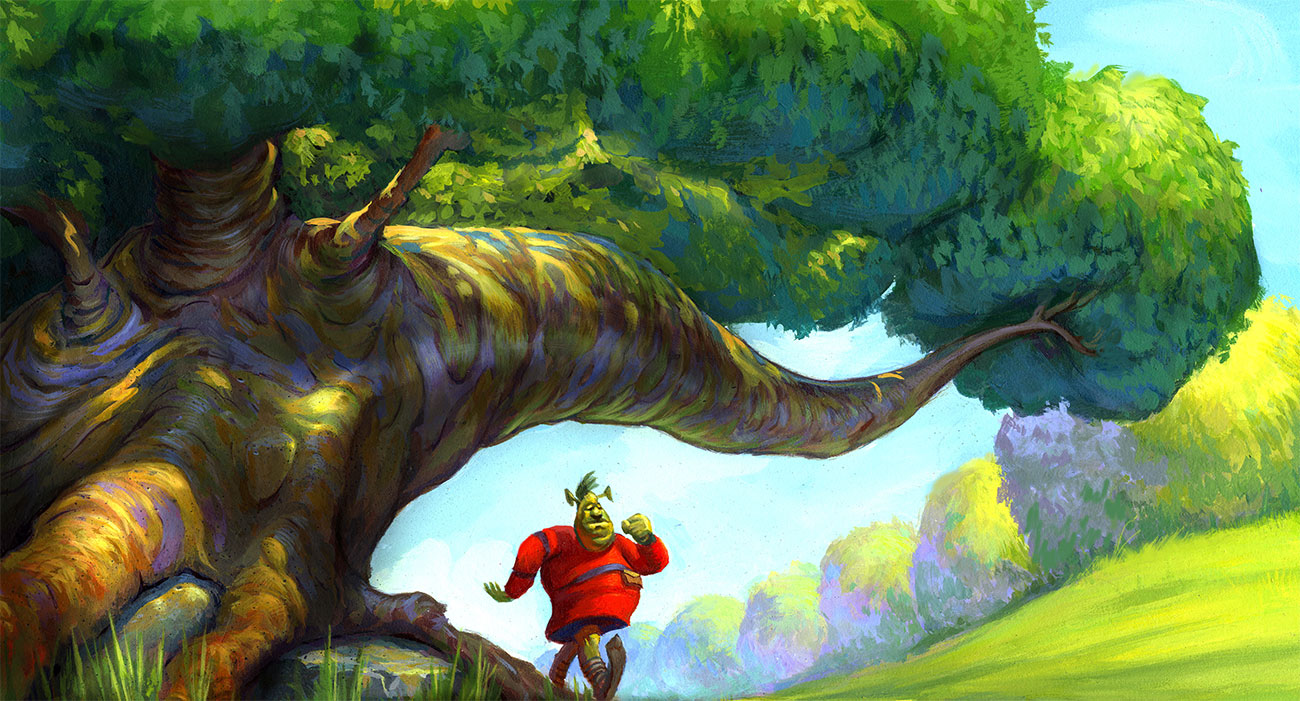Ah, Shrek. Perhaps the greatest movie of our generation’s childhood. The film came out in 2001, in the early days of 3D animation, but it has stuck in our hearts and meme culture since then. Because of that prolonged popularity, people are doing their research into the film’s lore—and they’re finding some pretty weird early renderings of the movie.
Shrek—the story of a lovable, grumpy ogre and his donkey friend—was an instant classic, so it’s no surprise that people have kept it alive by finding media that was “lost” from the movie, often published by former employees of the film’s production. In early August, a video was posted to YouTube claiming to be early renderings from a Shrek animation test, in what looks to be a very dark, grungy town, set to James Brown’s “I Feel Good.”
Videos by VICE
In the video, Shrek’s head is pointier, his stance is livelier, and his overall look is more unsettling. There’s also another character this Shrek interacts with, who isn’t identifiable from the final movie.
But other “lost” media from the movie contradicts this dark, edgy interpretation. Images recently posted to Reddit’s lost media forum, r/lostmedia, show colorful, whimsical concept art for the first movie.

These renditions of Shrek show a short, pudgy man with hair on his head and a spring in his step. This Shrek is much less terrifying than the “I Feel Good” rendition—yet neither version made the final cut of the movie. What gives?
Ruben Hickman, an early concept artist for Shrek and the creator of the whimsical paintings, explained in a call with Motherboard that there were two visions for the style that had to be reconciled: that of the directors, and that of the artists.
“The first day I’m there, I get taken in by the new directors, and they showed me their vision for Shrek,” Hickman recalled. “They showed me a lot of Wizard of Oz, and some other things like that.”
Hickman said that he then went to meet with the team of three artists, led by a man named Barry Jackson. Hickman claims that Jackson told him, “It’s going to look like this,” and showed him art that was “much more underground comic, edgy, a lot darker. The color scheme was much more experimental. I realized I was in a tug of war immediately.”
For a while, the grunge won as the film’s predominant art style, Hickman said. There was even a short film made in the late 1990s, as a test run for the animation style.
“A robber tries to rob Shrek,” Hickman said, describing the plot of the short film. “Shrek’s walking up to the castle, and a robber comes down a rope off the wall. I don’t remember the details. It looks utterly nothing like the movie.” He claims that Jeffrey Katzenberg, the CEO of DreamWorks at the time, hated the short film and said it would never be seen.
Hickman’s description seems to match what little we have of the “I Feel Good” Shrek rendition. Barry Jackson’s Instagram page, Hickman confirmed, has concept art that actually made it into the short film.
The grunge take on Shrek didn’t make it to the final cut of the film, Hickman says, because of the movie’s high turnover rate of artists and directors. This, he said, led to the final, more tame version of the ogre as a compromise between the cheerful Shrek and the more gritty one.
“The moment I walked in there, there were two competing versions,” he said. “Neither one of them really won out. The more toned down version ultimately won out, because in a lot of ways it had to. A dark color scheme was not going to go over in a mass audience the way that Shrek did.” He said that though the final product was quite different from any original vision, he’s happy with how the movie turned out.
Hickman also noted that the technology required for 3D animation was just barely coming to life, which contributed to the art style purely in feasibility. “The look was in many ways a by-product of what technology people could achieve,” he said. “It was very early for figuring out how to move a body around, things like that.” But he’s proud of the film nonetheless.
“Shrek is one of the biggest movies of all time,” he said. “So it’s hard to question success.”
More
From VICE
-

Mightiest Mark Dragapult -

(Photo by Michael Buckner/Variety via Getty Images) -

Screenshot: Warner Bros.

